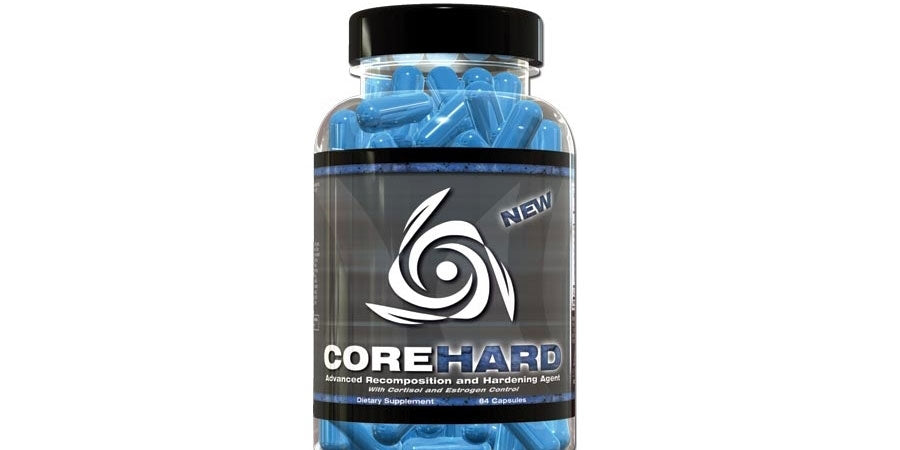
5-AT: Core HARD Reformulation
Core Nutritionals is and always has been committed to the continued success of natural and drug-free sports and bodybuilding. As part of this commitment, we strive to develop dietary supplements that conform to the strict testing standards and regulatory guidelines used by natural bodybuilding and other sports organizations.
We recognize, however, that industry often outpaces regulation, and that safe, legal, and effective dietary ingredients may be misidentified and banned as a consequence. It has come to our attention that the safe and effective dietary ingredient 5-Etioallocholen-3b,7b,17b-triol (5-AT) has been added to the INBF/WNBF banned list as of August 31, 2014. Banning 5-AT is one such instance where the biochemistry and action of a supplement is being misunderstood or misinterpreted. (We have spoken to the officials of the OCB/IFPA and they commented that this ingredient will not be added to the banned list until adequate time is given to notify athletes – most likely December 31, 2014).
Despite being a natural metabolite of the hormonal precursor DHEA and 7-OH-DHEA, readily found in the human body through enzymatic action, certain regulatory bodies have recently identified 5-AT as an “anabolic steroid.” We disagree with their position. (For those interested in the science and details for our disagreement of this decision, see the write-up below).
Core Nutritionals points to the wealth of information on DHEA, and its various metabolites (7-keto-DHEA, 7-OH-DHEA, 5-AT, etc) demonstrating these compounds as natural and well-tolerated by humans. In spite of our steadfast support of this ingredient's status as safe, natural, and effective, Core Nutritionals will eventually be reformulating Core HARD (as it contains 5AT) to stay ahead of the regulatory curve. The original version will still be sold until the remaining inventory is depleted through the end of 2014. Look for a revised version of CORE HARD in the next 6 months.
Core Nutritionals would like to take this opportunity to thank the natural athletes, trainers, and volunteers who support our organization. We remain committed to the development of dietary supplements that are both cutting-edge, and compliant for use in the leading natural bodybuilding and sports organizations.
Best Regards, Doug Miller President and CEO Core Nutritionals, LLC
The SCIENCE of 5-Etioallocholen-3b,7b,17b-triol [5-AT]
Some testing/regulatory agencies have claimed that “5-Etioallocholen-3b,7b,17b-triol [5-AT] has been identified as an anabolic steroid” and “is not of natural origin and it is obtained synthetically.”
Core Nutritionals adamantly disagrees with both statements.
On the first issue, DHEA is a "steroid," provided we use that term in the strictest physiological sense - one stripped of any of the negative colloquial associations that are bandied about. It is a steroid in the sense that it synthesized by steroid-producing organs in the body (brain, gonads, and adrenal glands), in that it is metabolically synthesized from cholesterol through various steps beginning with cholesterol side-chain cleavage enzyme, and in that it possesses the cycloalkaline ring structure requisite to be designated as a, "steroid." But the similarity between DHEA and what individuals typically mean when they designate a compound as a steroid ends there.
DHEA's binding affinity to the androgen receptor (in all cell types, including skeletal muscle) is so weak as to be considered barely existent; an issue compounded by the fact that, in addition to a low binding affinity, its intrinsic action at the cell (the genomic or metabolic functions a binding compound exerts on the receptor site) is effectively anti-androgenic. (This is of course separate from its genomic and enzymatic functions on, say, 11B-HSD1, the properties that make it viable to use as a dietary supplement.)
Now, while certain literature has demonstrated that the estrogenic and androgenic metabolites of DHEA (such as 5-Etioallocholen-3b,7b,17b-triol) exert both stronger binding affinity and intrinsic receptor action than their parent compound, no evidence has shown that they substantively alter reproductive or skeletal muscle function in humans sufficient to label them, "anabolic steroids." There is no evidence to suggest that exogenous supplementation with any of DHEA’s three oxygenated metabolites (including 5-Etioallocholen-3b,7b,17b-triol) leads to the suppression of reproduction function via negative feedback (a key physiological identifier for the term, "anabolic steroids), or, for that matter, than either the parent DHEA compound or its oxygenated metabolites exert any significant effect on skeletal muscle protein synthesis. Futhermore, these metabolites also do not affect Testosterone to Epitestosterone ratios, which are used as an indicator for the use of exogenous testosterone.
On the second issue of being synthetic, that is simply false, and even a working knowledge of organic chemistry would betray that position. DHEA's oxidative metabolic pathway is well-established, beginning with conversion of DHEA to its 7a metabolite 7a-hydroxy-DHEA via oxysterol 7a-hydroxylase (as well as two other CYP enzymes), then to the conversion of 7a into the 7b form, and finally from 7b to 7-oxo and its various metabolites - including, principally, 5-AT. Given that extracting this metabolite from human plasma is both unethical and impossible, yes, the compound is, "synthesized" - but certainly not in the sense the word is being used here.
For more information regarding research, development, and formulation of Core Nutritionals’ products,
email info@corenutritionals.com or call 888-978-2332.

